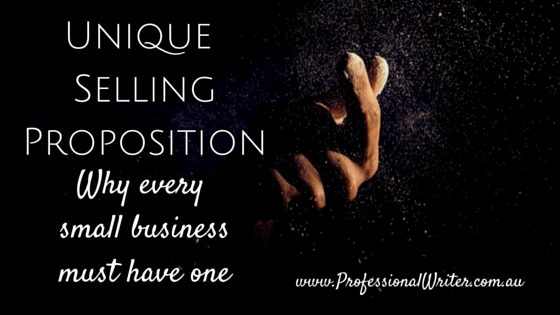Building strong relationships starts with creating connection. Whether it’s a relationship with your spouse, family or friends or with customers, connection is the basis of all great relationships.
Creating a strong connection with your target audience should be a key goal of any business owner, whether you’re just starting out or you’ve been in business for years. There are a few key strategies you can use to make sure your copywriting is connecting with your ideal clients on a deeper level.
Copywriting is an essential skill for any business owner or entrepreneur who wants to market their products or services online. Whether you’re writing website copy, blog posts, emails or social media posts, if you can master the art of writing for connection, you’ll be well on your way to developing strong relationships with your ideal clients. But what does it mean to write for connection?
Here are 7 key strategies for creating connection through copy:
1. Know your target audience
I can’t stress this enough. Knowing who you’re targeting is key. Not everyone is your ideal client, and that’s okay. When you know who you’re writing to, you can better connect with them on a personal level.
One important strategy is to get to know your target audience as well as you can. Creating an Ideal Client Profile (ICP) before your start writing will help you with having a clear picture of who you’re targeting. It’s a great idea to really drill down and get to know their likes, dislikes, hobbies, interests, pain points and what motivates them to buy products or services such as yours.
By using these tips, you’ll be able to create a more personal and authentic connection with your readers which will lead to stronger relationships. Let’s dive in!
2. Be relatable
Your goal is to connect with your reader on a human level. To do that, you need to be relatable. Write as you would when speaking to a friend. Use language that is easy to understand and avoid industry jargon. When it comes to social media or blog posts.
When it comes to social media or blog posts, share stories about yourself, including details about your daily activities, questions you can answer, things you enjoy doing, etc. This is a great way to establish common ground with your audience. When creating relatable content, getting personal is good.
3. Be authentic
This one is key. People can spot inauthenticity a mile away, so it’s important that you be genuine in everything you do – from the photos you use on social media to the copy you write for your website. Be yourself and let your personality shine through.
Because we know how important the know-like-trust factor is, it’s vital to be authentic. By being genuine, people will get to know the real you which goes a long way in building trust – something essential for any strong working relationship.
4. Use active language
When writing copy, use active language, as opposed to passive voice. Active voice is when the subject of the sentence is doing the action, i.e. “I am writing a blog post” vs. passive voice, which would be, “A blog post is being written by me.”
The active voice sounds more personal and creates a stronger connection with your reader. It’s also more direct, clear and concise, which helps keep your readers engaged.
5. Stories are ideal for creating connection
People connect with stories – not facts and figures. When you share your personal story, it allows your readers to see the person behind the business or brand. It also helps them understand how you can relate to their own experiences.
We’ve all heard it before that people do business with those they know, like, and trust. Stories help people relate to you, to know you and like you, and they play a significant part in building trust.
6. Share your client success stories
People love to emulate the success of others. That’s where client success stories, or case studies, can be very effective because they provide real-world examples of the outcomes and benefits of your product or service.
Case studies are really powerful. If you don’t have any on your website or to use in your marketing campaigns, it’s definitely time to add some. They’re an excellent way to show social proof and build trust with your audience.
7. Ask questions they’ll say YES to!
When creating connection, it’s important to get people to feel positive about your proposition, products or service. You can do this by asking questions that they will answer with a resounding “yes!”
For example, if you’re a wedding planner and you’re writing website copy, you could ask something like, “Are you looking for someone who will take the stress out of planning your dream wedding?” The answer is most likely going to be yes, which then creates connection and rapport with your reader.
Use these key copywriting strategies if you want to write copy that creates connection and builds relationships with your ideal clients, use the tips above. They’ll help you sound more human, relatable and authentic – all important factors in creating lasting relationships.
Creating connection is essential if you want to build strong relationships with your ideal clients. By using these seven key strategies, you’ll be well on your way to writing copy that resonates and connects with your audience.
We trust this article has proven helpful in providing tips that will ensure your copy is successful in creating connection with your target audience.
One more thing ….
Want to learn more about writing in a way that engages and connects? Well, good news! We’re currently working on a business copywriting course to help teach you the basics of writing engaging content. In this course, you’ll learn copywriting tips, tricks and strategies based on our 20+ years of expertise. Click here to receive updates on the upcoming release of this new and exciting course – and get ready to welcome more clients! As a bonus, you’ll receive the Ultimate List of Time-Saving Tips to help you Write Copy & Content in a Jiffy!
Do you need assistance with blog posts, a business award submission or website copy written for you? Reach out to chat about our done-for-you service via our Contact page.
Please feel free to share these tips with your friends, business associates or LinkedIn connections. Go ahead and connect with Lyndall on LinkedIn.
You may also enjoy reading these related articles:


